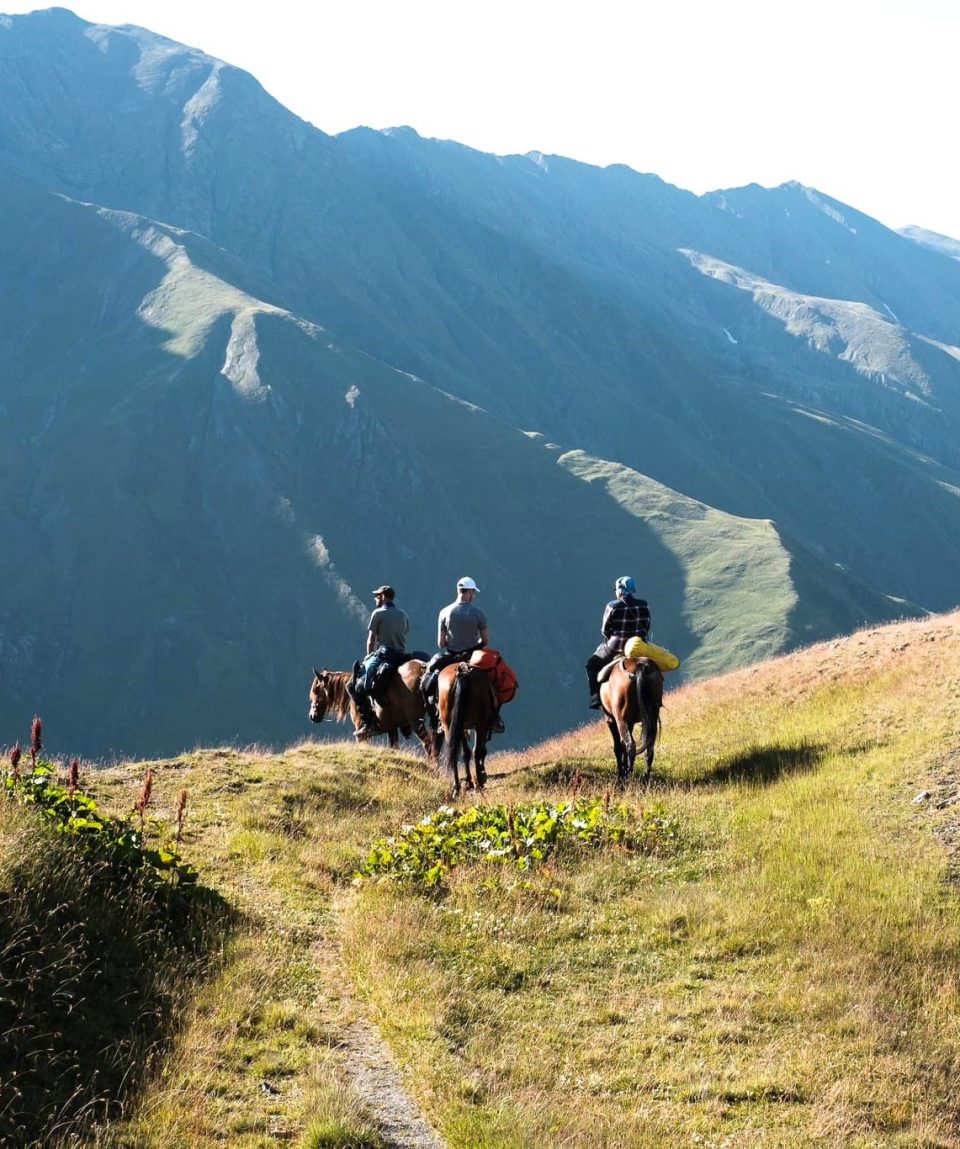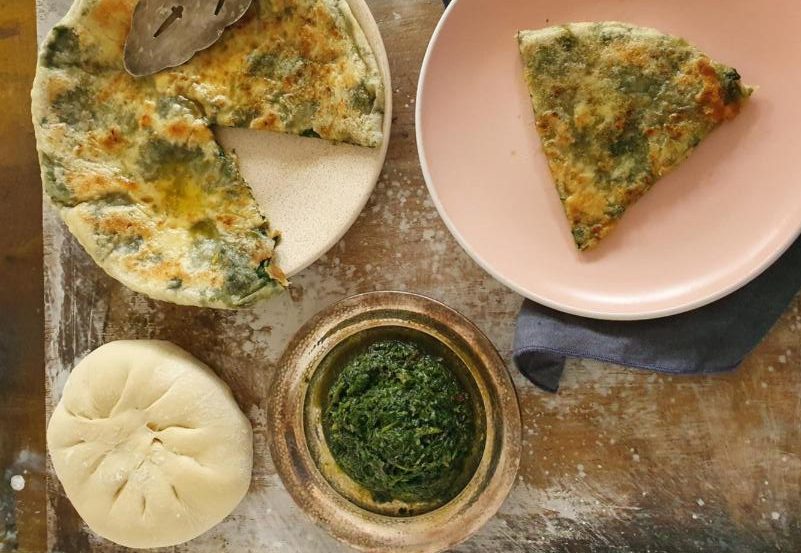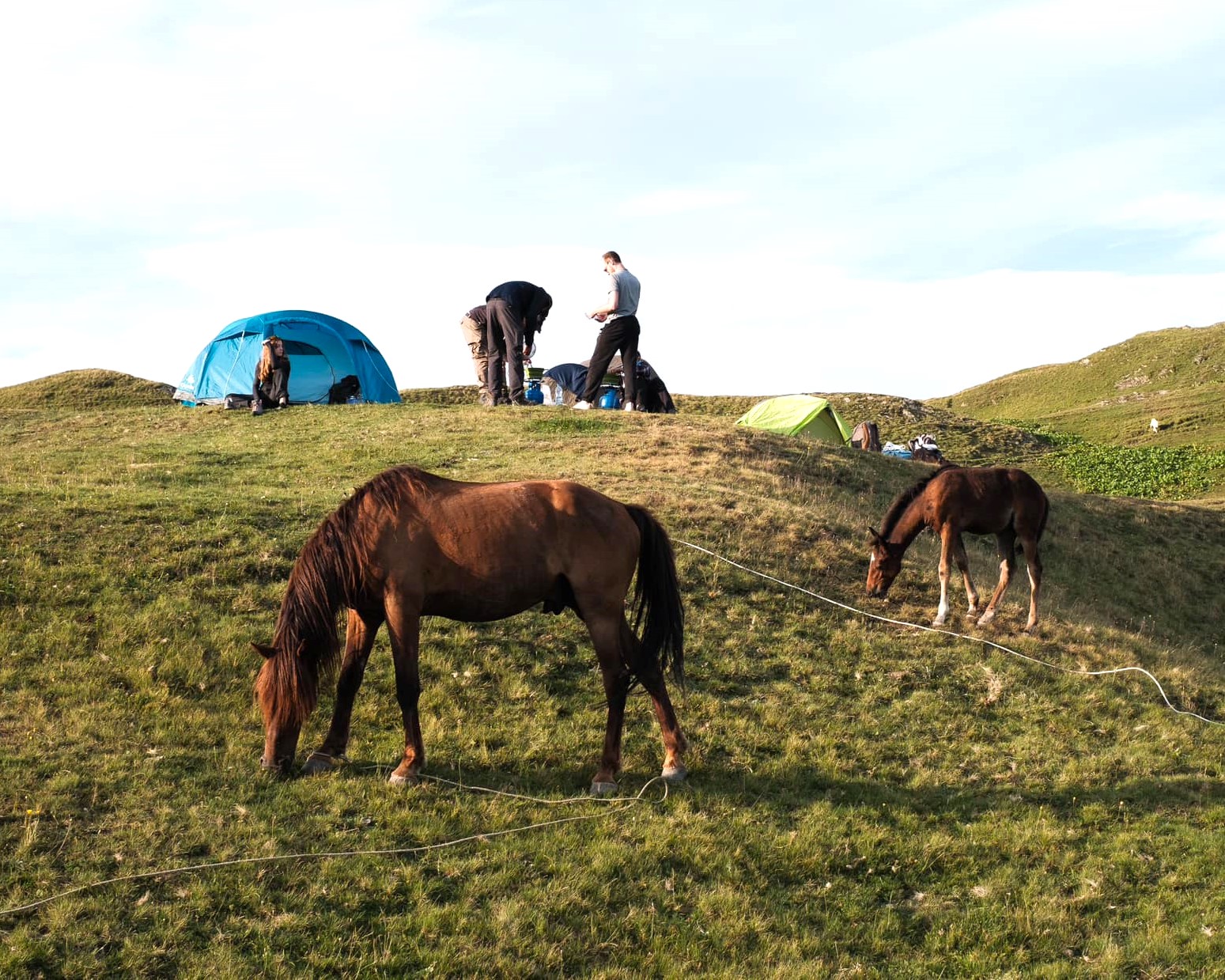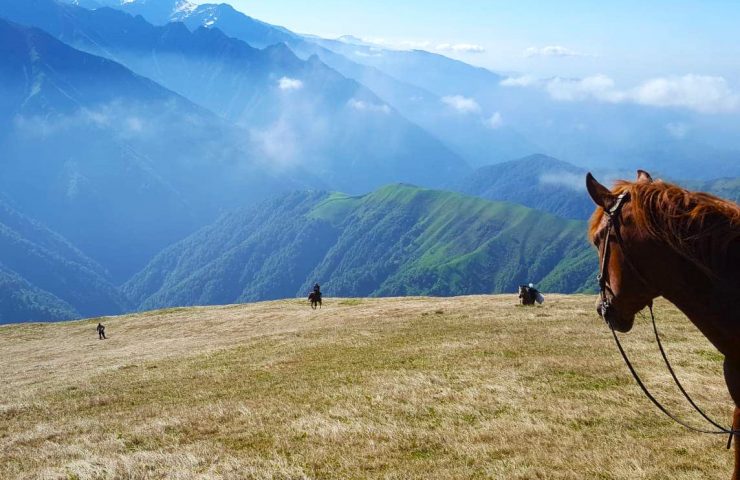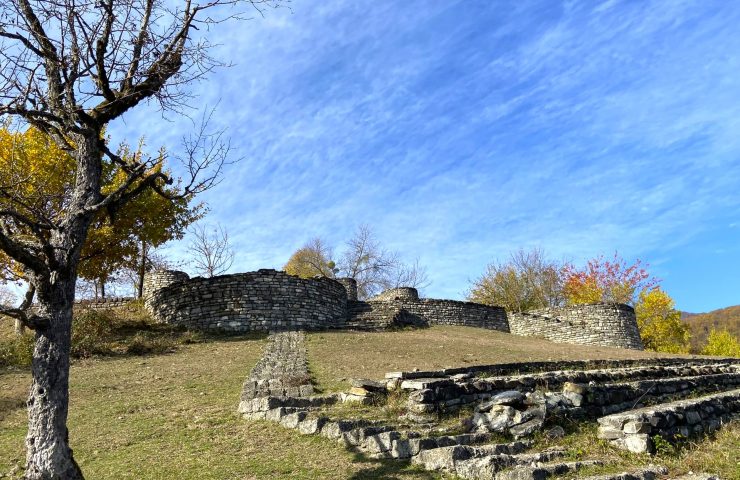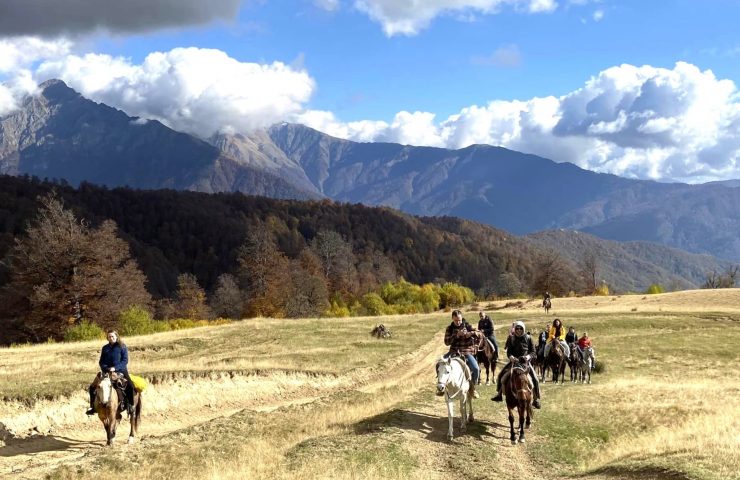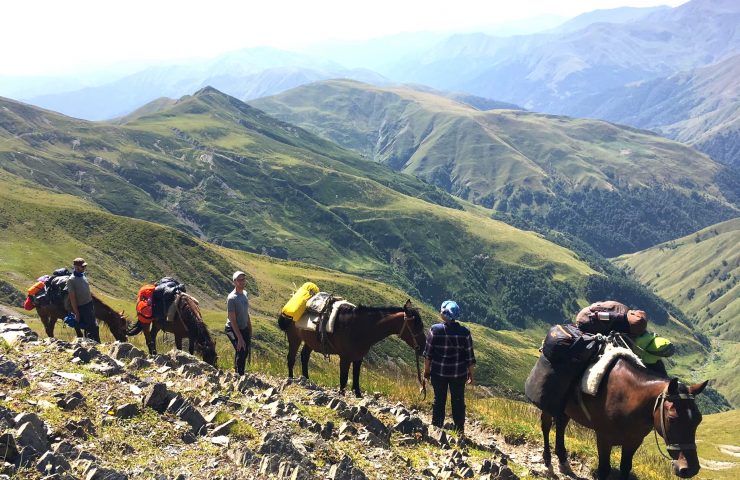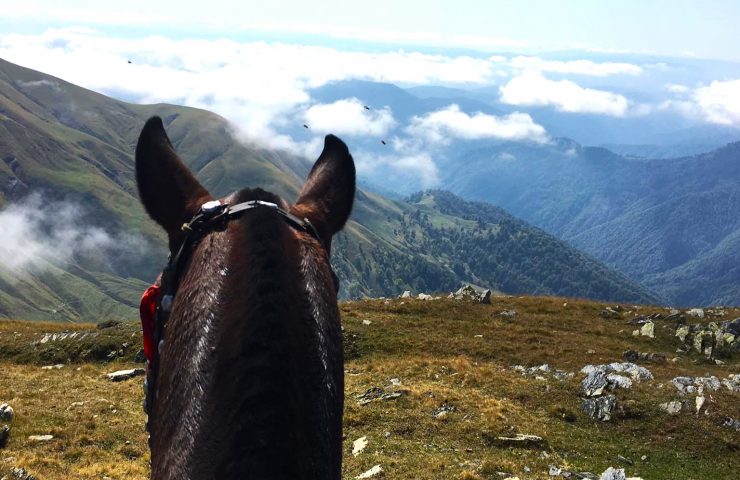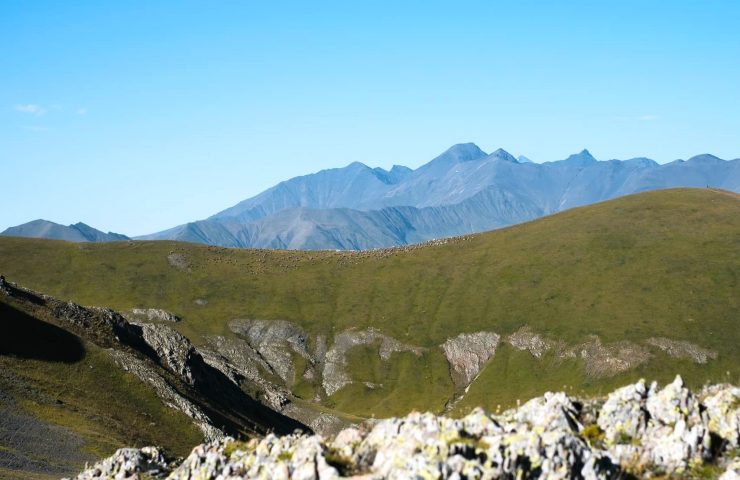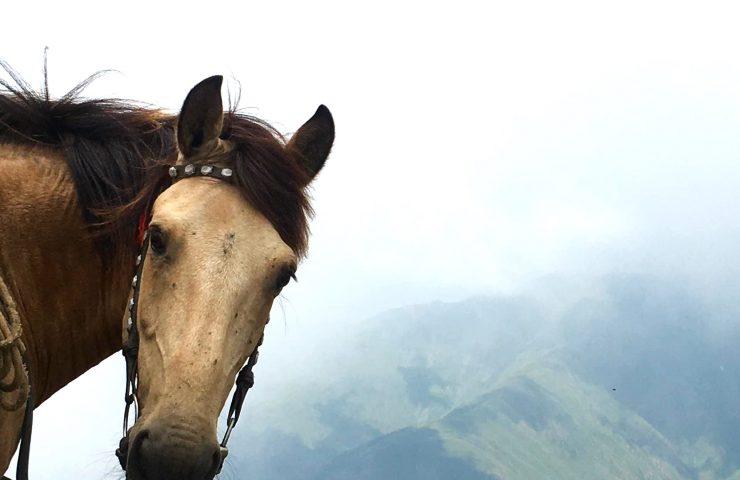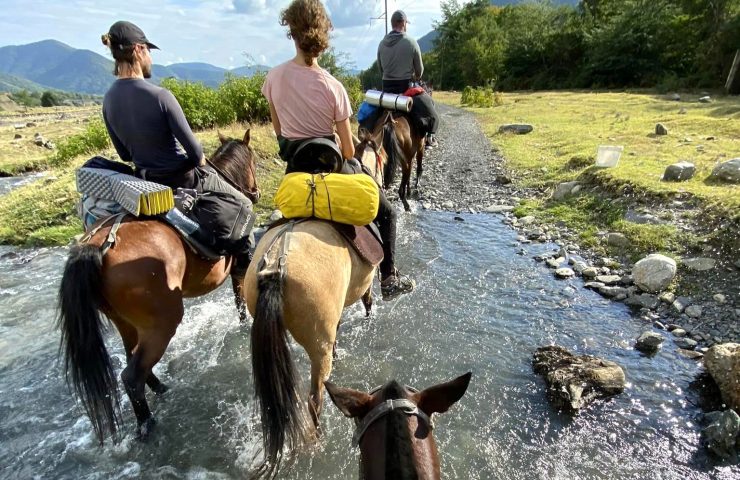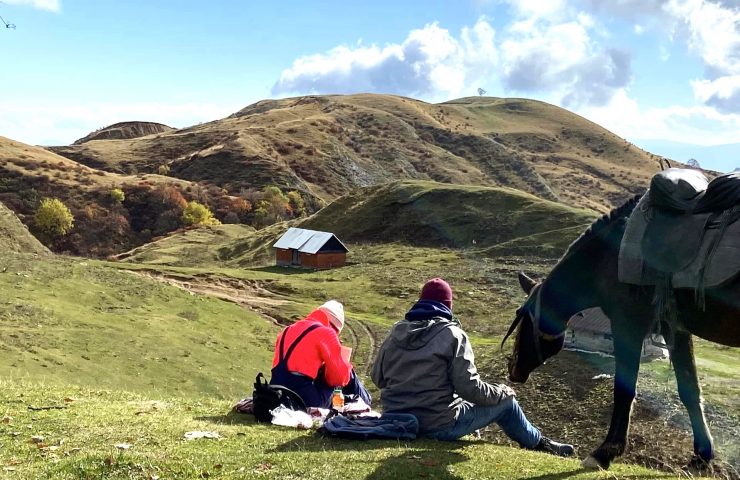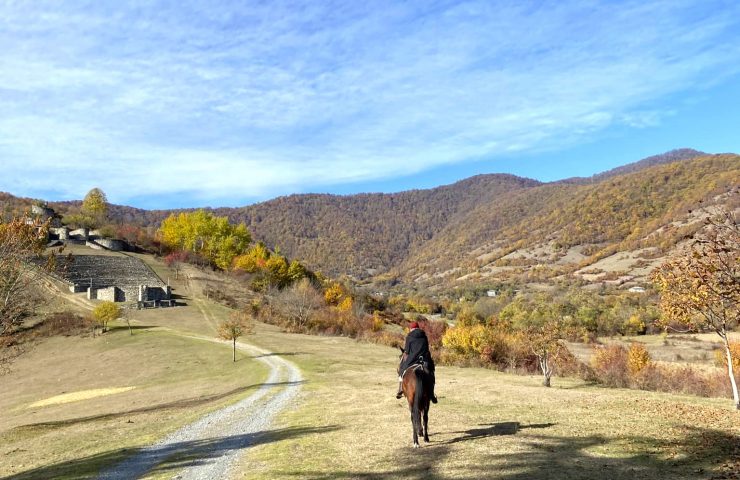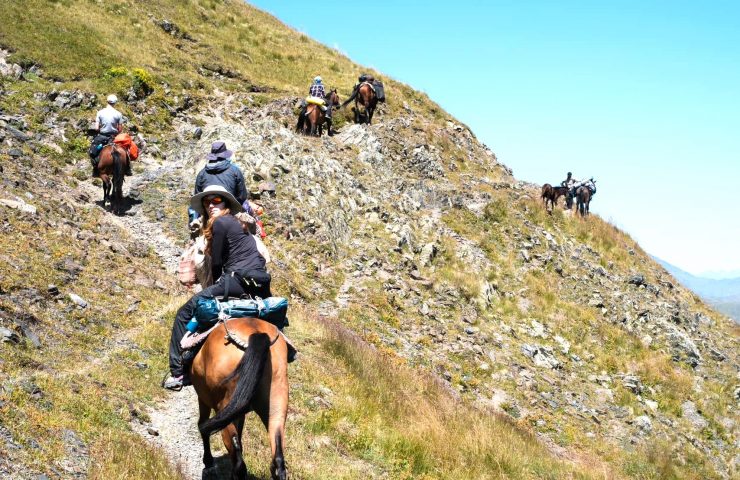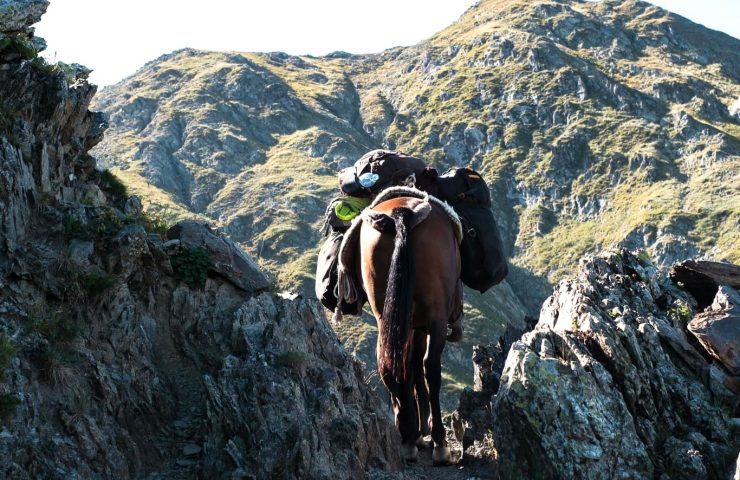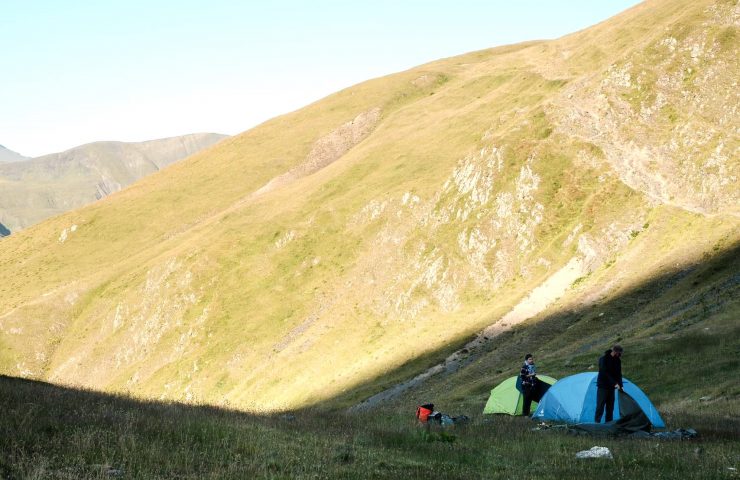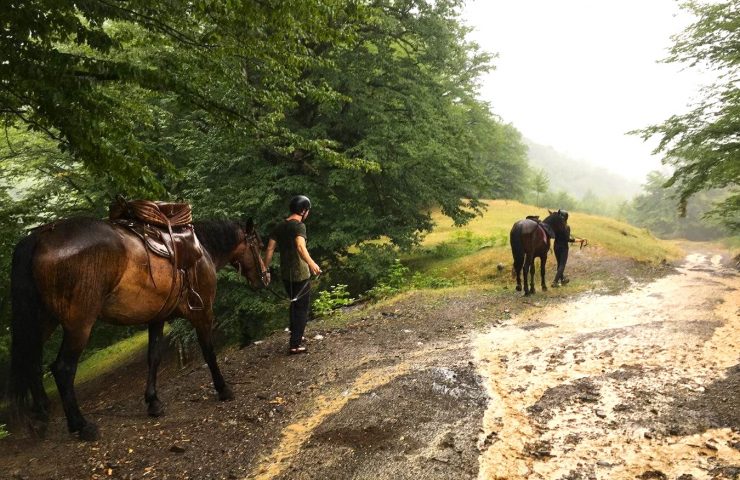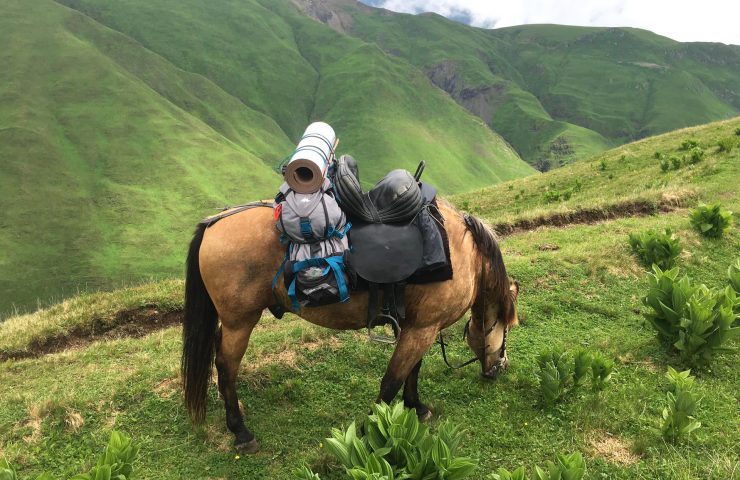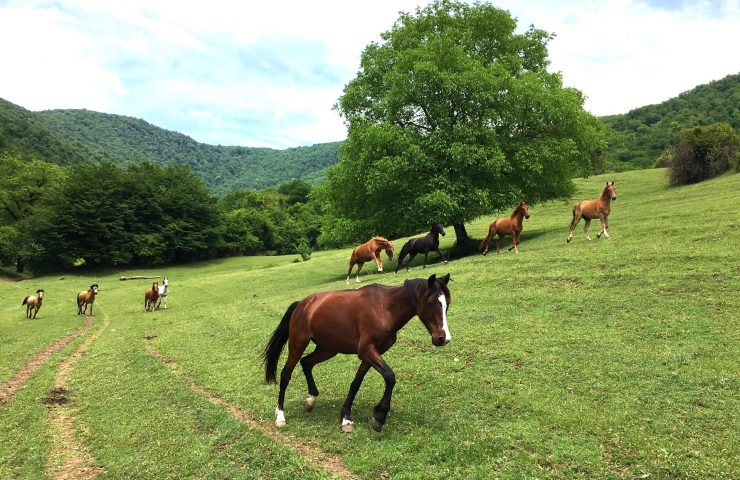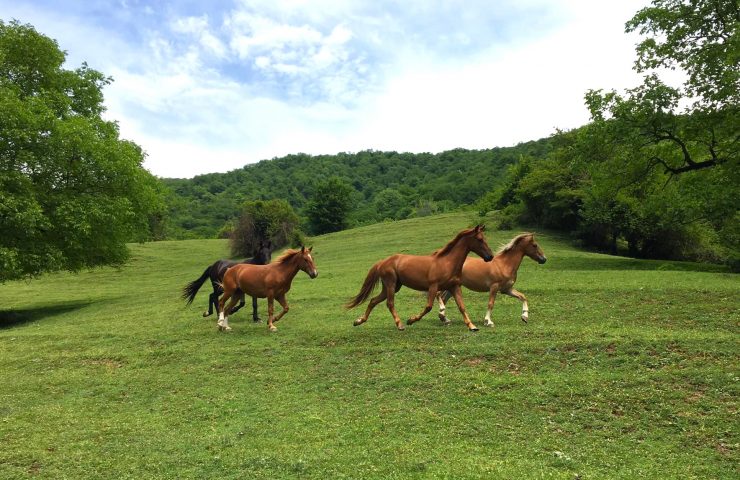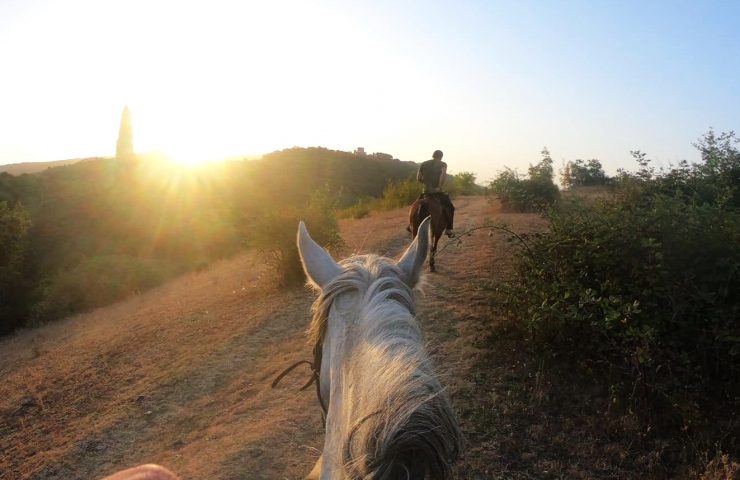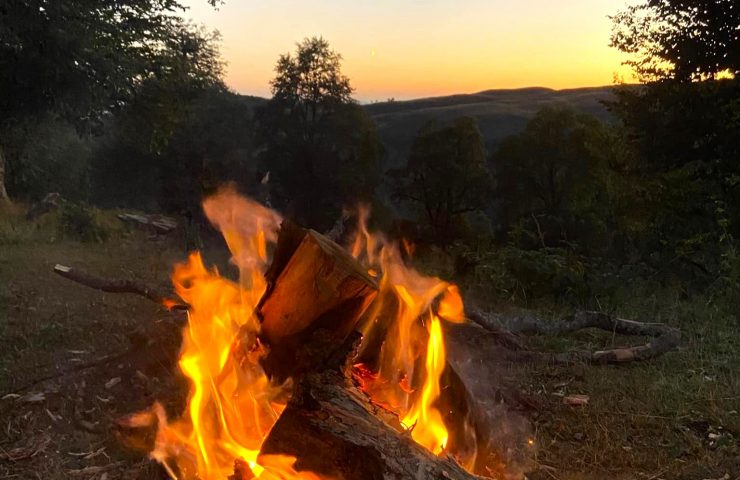
Ancient Shepherding Trail
Georgia
An extraordinary, semi-wild expedition through the Caucasus lies ahead of us! We set out from the Pankisi Gorge to ride into the majestic Caucasus, cross mountains, camp under the stars and reach beautiful Tusheti. The trail follows shepherding paths used already in ancient times to drive flocks between Winter pastures in the lowlands and Summer ones high in the mountains. Today, those trails are almost forgotten, but sometimes shepherds still walk those secluded paths with their flocks and brave horse riders follow in their footsteps. Our guides and horsemen are Kists from Pankisi, who also host us in the lowlands, and Tushetian highlanders, our great friends up in the Caucasus. There has never been an adventure like this before!
-
Days overall10 daysDays in saddle7
-
Group size8Available
-
Standardno limit, on horses:Luggageno limit, on horses: 12 kgFoodlocal cuisine, vegetarian available
-
Skillswalk, trot, canter
Once upon a time, today’s Georgia was divided into two lands: the famous Colchis, known from the myth of the Argonauts, and Iberia, the land of warriors defending Asia Minor against the Scythians. Both kingdoms nestled at the feet of the majestic Greater Caucasus. Mountain slopes and valleys cut off from the world were hidden from the eyes of the kings and chroniclers of that time. As a result, the Caucasus and its inhabitants became the stuff of legends. Some claimed that the labyrinth of valleys was inhabited by Sarmatians, others pointed to the Didoi peoples. There is also a map according to which it was the homeland of the heroic Amazons…
Today we know that the ancient Caucasus was inhabited by numerous ethnic groups. The oldest documented habitat was located at the sources of the life-giving Alazani River. Although the former inhabitants left no material legacy, we will follow in their ghostly footsteps, enjoy the same views, traverse the same passes and camp under the starry sky the same way they did and sometimes still do.
We start the adventure in the Pankisi Gorge, located at the foothills of the Caucasus. Today, Kists, i.e. Georgian Chechens, live here. They moved to this region at the beginning of the 19th century, and soon after, along with Georgian citizenship, they also adopted Georgian surnames and settled in their new homeland for good. The Kists are Muslims practicing Sufism, with the influence of animist beliefs typical of the entire region. Currently, their population is estimated at 5 to 7 thousand people.
We will ride in Pankisi for two days to explore the region before we start our journey through monumental Caucasus mountains. We will spend three days and three nights far from any human settlements. We will only rely on ourselves, our horses and the supplies we take with us. But don’t worry, our guides know what they are doing 🙂 Everything we need will be carried by our pack horses. Like historical explorers, we will wander through places untouched by progress and civilization.
The last part of the journey is Tusheti, the magical land of Georgian highlanders, where we have felt at home for years. We will be welcomed by old friends there, who will host us while we ride to Omalo, the target destination of our trail.
- 2 nights at a hotel in Tbilisi Tbilisi
- 4 nights at guesthouses in Pankisi and Tusheti
- 3 nights tenting in the mountains
- Breakfasts in Tbilisi
- Full board in Pankisi and Tusheti (brakfasts, lunches “to go”, dinners)
- Full supplies for the crossing through the mountains, from which the group prepares meals together
- Transfers to and from Tbilisi airport (on first and last days of the tour)
- Transport from Tbilisi to Pankisi and from Tusheti to Tbilisi
- Horsemen and guides during the entire ride
- English-speaking pilot/guide during the entire tour
- Horse with full tack and equipment
- Pack horses
- Tents and sleeping mats
- Tourist insurance covering high-risk sports
- Flight tickets to and from Georgia
- In Tbilisi: two dinners – on the first and last nights
- Minor personal expenses (souvenirs, additional snacks, admission tickets, etc.)
- Optional: single room supplement (where available)
- Day 1 Arrival
- Day 2 First ride in Pankisi
- Day 3 Waterfall and visiting the imam
- Day 4 Shepherds' trail
- Day 5 The Iron Mountain
- Day 6 Sources of the Alazani river
- Day 7 Tusheti
- Day 8 Centering to Omalo
- Day 9 Back to Tbilisi
- Day 10 Farewell to Georgia

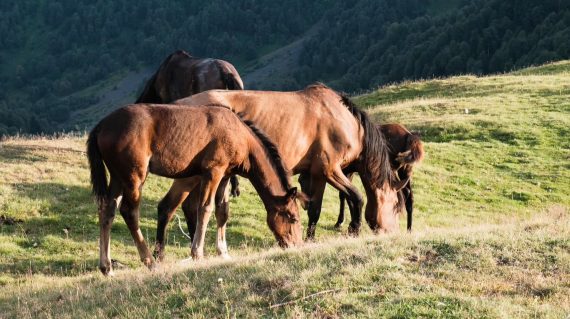

In Tbilisi, the group stays at a European standard family hotel. In Pankisi we stay at a local guesthouse in Jokolo village, in beds, with hot water and electricity. While hacking through the mountains we camp, spend nights in tents and sleeping bags, tending to our horses and cooking together. During these three days and nights we do not have access to any sanitary base: we will be in wild, uninhabited mountains, getting water for cooking and washing from mountain streams. In Tusheti we spend both nights under roofs, in beds and bed linen, with access to bathrooms and electricity.
In Tbilisi, we eat breakfasts at a hotel (on the second and last day). Other meals in Tbilisi (two dinners – on the first and last night) should be purchased individually. In Pankisi and Tusheti we are provided with meals – breakfasts and dinners in gueshouses, we take packed lunches and have them while resting. During the three-day crossing through the mountains, we prepare meals together on fire and on portable burners, from supplies carried by our pack horses.
Meals in Pankisi and Tusheti are traditional, local dishes: mainly vegetables, mutton and local cheeses in all forms. Drinks include – in addition to crystal clear water – herbal teas, wine and chacha. In Tbilisi, there are restaurants serving dishes from all over the world.
Equipment
We use typical Caucasian saddles. They are quite different from the English and Western-style saddles and very comfortable for both horses and riders, especially for high mountain riding. Steel saddle bows are set on wooden benches. This construction is covered with a moderately soft “pillow” made of leather. The pillow is kept in its place by a strap, usually made of leather, which serves as a girth part at the same time. Tail docks are common.
Stirrup leathers in Georgia are quite short – Georgians practice a distinctive seat: legs in the front, knees high. Stirrups are quite simple and wide, allowing trekking shoes to fit inside well. Bridles are also simple, made the usual way. We use bits.
Caucasian / Georgian moutain saddles often raise interest, as they are different than classical, English or Western-style ones. Fairly unknown in the West these saddles are very comfortable for long and steep rides. Pommels and cantles are quite high to stabilize riders in mountainous terrain and the pillow seat absorbs bumps very well. This non-standard construction is also quite practical when it comes to attaching larger quantities of luggage.
What you should take with you
The trail between Pankisi and Tusheti leads through mountains inaccessible by car. All out luggage for 4 days and 3 nights has to be transported on horses. While it’s a good idea to travel to Georgia with a reagular suitcase, riders will need to re-pack for the horse trail. All belongings you won’t need for the trail will stay in Pankisi and will be transported to Tusheti while we are ont he trail. All your personal stuff for the trail goes on horses, so the overall weight of the trail luggage shouldn’t be more than 12 kg per person. All items should be packed in waterproof, soft bags or sacks that can be strapped to the saddle.
- passport
- cash, USD or EUR
- electronic devices, e.g. camera
- waterproof bag(s) for the trail (sailing or kayak type ones are great)
- sleeping bag
- handy backpack or bag (for documents, phone, etc.)
- canteen or other water containers (it might be an empty plastic bottle)
- flashlight; head flashlights are quite handy
- sunscreen
- head cover against the sun
- trekking shoes, waterproof ones advised
- raincoat / waterproof jacket
- flip-flops for showering
-
fot. z archiwum przewodnika
-
fot. z archiwum przewodnika
-
fot. z archiwum przewodnika
-
fot. z archiwum przewodnika
-
fot. z archiwum przewodnika
-
fot. z archiwum przewodnika
-
fot. z archiwum przewodnika
-
fot. z archiwum przewodnika
-
fot. z archiwum przewodnika
-
fot. z archiwum przewodnika
-
fot. z archiwum przewodnika
-
fot. z archiwum przewodnika
-
fot. z archiwum przewodnika
-
fot. z archiwum przewodnika424615926130_n
-
fot. z archiwum przewodnika
-
fot. z archiwum przewodnika04075777661_n
-
fot. z archiwum przewodnika
-
fot. z archiwum przewodnika
-
fot. z archiwum przewodnika
-
fot. z archiwum przewodnika
-
fot. z archiwum przewodnika
-
fot. z archiwum przewodnika
-
fot. z archiwum przewodnika
-
fot. z archiwum przewodnika
| Date | Trip Status | Price | Spots | |
|---|---|---|---|---|
20 August 2024 - 29 August 2024
|
Full group |
1090 € |
0 |
